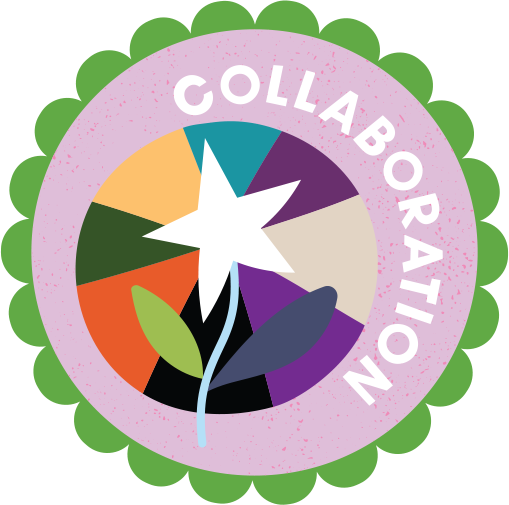At Minnesota Children’s Museum, we believe in the power of play. Play is how children explore the world around them, navigate relationships, nurture curiosity and find joy. This post is part of a series showcasing the seven powers of play: confidence, creative thinking, critical thinking, self-control, collaboration, communication and coordination.
Power of Play:
Collaboration
What it is:
What it looks like in action:
Collaboration looks like kids putting their ideas together to pursue a shared goal. They’re not only listening to each other, but asking, “What do you think?” or “Do you have an idea?” When kids collaborate, you’ll notice that their egos quiet down a bit. No one needs to be the boss or be “right,” but everyone is working together and building on each other’s ideas.
Why it matters:
Collaboration is how great ideas grow and become reality. It builds empathy by asking kids to see and consider other ideas and perspectives. Friendships are built through collaboration because trust is formed through listening and compromise. Collaboration is how kids find and offer encouragement, develop their identity in relation to others, and experience the joy of a shared accomplishment.

“Children need the freedom and time to play. Play is not a luxury. Play is a necessity.” -Kay Redfield Jamison, Psychologist

How play helps:
Play is collaborative by nature. Kids often move in and out of an activity, with new kids offering new ideas to the mix. To continue playing, kids often need to share what they’re doing and respond to feedback in some way—if the game is unfair, no one will play, so they’ll need to evolve the rules. Play is also made more fun through collaboration. If an activity becomes boring, kids often seek to improve it by hearing out new ideas: If the sandcastle is already built, someone might suggest building a tunnel underneath it, or destroying it by lobbing clumps of sand. Seeking new ideas, adding to them and seeing them through is the stuff of collaboration.

At home or on the go, caregivers can enhance children’s collaboration by:
- Modeling. When you collaborate with others in work or in life, talk to your kids about how it looked, the joys and challenges, and its impact.
- Asking plenty of questions, like “What are you doing?” and “What do you think?” and “How else could we do this?” Then, encourage kids to ask the same questions of you or others.
- Supporting children in trying out new roles and building empathy during imaginative play, during games, or in conversation. What does it feel like to be the new kid? The kid who is hard of hearing? The athlete? The artist?

Play prompts & activities to support collaboration:
- DIY window mosaic (Don’t want to risk the window? Try this on a large piece of poster board!)
- Make a mural with family or friends (Don’t have a stretch of wall or fence?Make a sidewalk mural with chalk!)
- Collaborative storytelling
- Grab a ball and bring it to a park. You’re almost certain to attract other kids!
Powers of Play
Coordination
Power of Play: CoordinationAt Minnesota Children’s Museum, we believe in the power of play. Play is how children explore the world around them, navigate relationships, nurture curiosity and find joy. This post is part of a series showcasing seven powers of play:...
Creative Thinking
At Minnesota Children’s Museum , we believe in the power of play. Play is how children explore the world around them, navigate relationships, nurture curiosity, and find joy. This post is part of a series showcasing seven powers of play: confidence, creative thinking,...
Communication
Power of Play: CommunicationAt Minnesota Children’s Museum, we believe in the power of play. Play is how children explore the world around them, navigate relationships, nurture curiosity and find joy. This post is part of a series showcasing seven powers of play:...
(Self) Control
At Minnesota Children’s Museum, we believe in the power of play. Play is how children explore the world around them, navigate relationships, nurture curiosity and find joy. This post is part of a series showcasing the seven powers of play: confidence, creative...
Critical Thinking
At Minnesota Children’s Museum, we believe in the power of play. Play is how children explore the world around them, navigate relationships, nurture curiosity and find joy. This post is part of a series showcasing seven powers of play: confidence, creative thinking,...
Confidence
At Minnesota Children’s Museum, we believe in the power of play. Play is how children explore the world around them, navigate relationships, nurture curiosity, and find joy. This post is part of a series showcasing seven powers of play: confidence, creative thinking,...